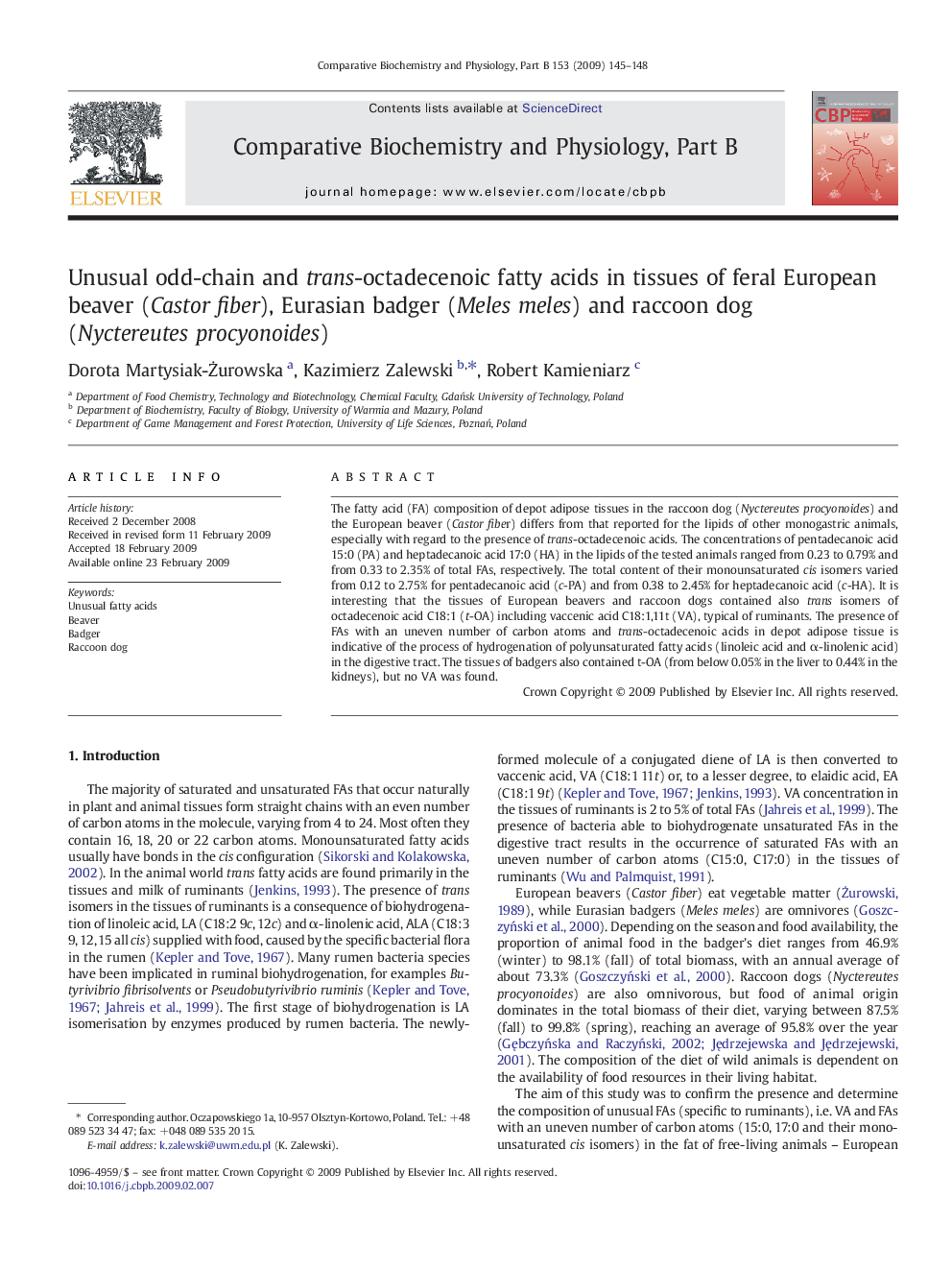| Article ID | Journal | Published Year | Pages | File Type |
|---|---|---|---|---|
| 1975836 | Comparative Biochemistry and Physiology Part B: Biochemistry and Molecular Biology | 2009 | 4 Pages |
The fatty acid (FA) composition of depot adipose tissues in the raccoon dog (Nyctereutesprocyonoides) and the European beaver (Castorfiber) differs from that reported for the lipids of other monogastric animals, especially with regard to the presence of trans-octadecenoic acids. The concentrations of pentadecanoic acid 15:0 (PA) and heptadecanoic acid 17:0 (HA) in the lipids of the tested animals ranged from 0.23 to 0.79% and from 0.33 to 2.35% of total FAs, respectively. The total content of their monounsaturated cis isomers varied from 0.12 to 2.75% for pentadecanoic acid (c-PA) and from 0.38 to 2.45% for heptadecanoic acid (c-HA). It is interesting that the tissues of European beavers and raccoon dogs contained also trans isomers of octadecenoic acid C18:1 (t-OA) including vaccenic acid C18:1,11t (VA), typical of ruminants. The presence of FAs with an uneven number of carbon atoms and trans-octadecenoic acids in depot adipose tissue is indicative of the process of hydrogenation of polyunsaturated fatty acids (linoleic acid and α-linolenic acid) in the digestive tract. The tissues of badgers also contained t-OA (from below 0.05% in the liver to 0.44% in the kidneys), but no VA was found.
